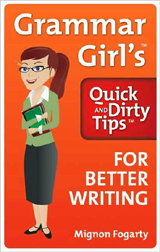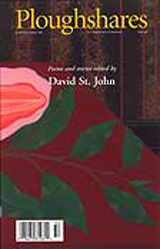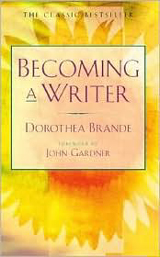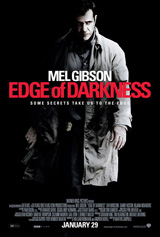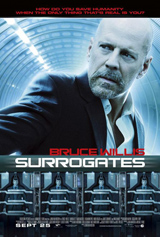Among the books piled on my living-room ottoman with Vroman’s Bookstore bookmarks wedged somewhere between the first page and the last is Syd Field’s The Screenwriter’s Workbook. It’s the first screenwriting manual I’ve ever picked up.
Yes, it is unexpected that a working writer in Los Angeles actually doesn’t write screenplays—kind of like telling a stranger you meet at a Hollywood party that you’re an editor and getting hooked up with a connection at a post-production house. (That’d be an editor of words, not pictures.)
Here’s what happened. I fly out on Saturday to spend three weeks studying abroad at Cambridge. That’s Cambridge, England—not, as one pal suggested, Cambridge, Ohio, or Cambridge, Minn., or Cambridge, Canada, which he thought you might need a student visa for. I’ll be taking a two-track course, studying fiction with Emma Sweeney and screenwriting with Antonia Bird, director of Ravenous. Because I’m wrapping up my writing master’s this fall with a fiction thesis project and haven’t taken any screenwriting courses, I ultimately decided this retreat of sorts would be a nice bookend to my education at USC.
Recognizing that although all the students participating in the program are graduate-level writers, but that some of us don’t have screenwriting experience, my department set up a one-afternoon-only seminar with script guru Syd Field, who teaches in MPW. He suggested we pick up his bible before the class.
Now, I’ve written about film for more than a decade as a movie reviewer and feature writer. But, as Syd said, writing a film is an entirely different thing, and it was my observations of the amount of work that goes into making a movie that so intimidated me about the form.
But Syd’s book makes it all seem so manageable.
First, before you even start writing, Syd advises to figure out what and who you’re writing about—your subject and character. Then decide how your story will end. Then decide how it will begin.
In the typical three-act structure, act I, about 30 pages long, is the setup; act II, 60 pages, the confrontation; and act III, 30 pages, the resolution.
So next, Syd advises, figure out plots points I and II—i.e., something happens that “spins” the action into act II or III. After that, determine your midpoint-something happens to break act II into two parts, in turn are divided by what he calls “pinches.”
Ultimately, Syd’s paradigm looks like this:

Suddenly you don’t have 120 blank pages ahead of you but manageable ten-page chunks, each working toward predetermined landmarks along the way.
Unfortunately, the Workbook itself is actually not very well written. At more than three hundred pages, it feels like a padded PowerPoint presentation. Repetition certainly is helpful when absorbing information, but here the reiteration just gets redundant. On a micro level, there are passages in which you’ll find a suddenly unrelated paragraph and paragraphs in which you’re not sure how the sentences connect. Other times, several concepts will be introduced, followed by a thorough definition of the first but no further mention of the others.
Some will criticize Syd’s form (it’s not a formula, he emphasizes) for being restrictive. Every screenplay is about 120 pages long, he says, with act I running thirty pages, act II sixty, and act III thirty, with the midpoint falling on page sixty, and pinches I and II falling on pages 45 and 75, respectively, etc. He even prescribes writing out each scene on a 3″ x 5″ index card-fourteen per thirty-page segment.
I do believe, however, that once you understand what has proven successful in the past-and he provides myriad examples from great films to illustrate his arguments—you can play with the form. And this approach particularly appeals to me—I’m constantly making lists and breaking things down into smaller, more manageable pieces. Something else might work for you. In all your writing, keep what works for you, whether it’s advice or critiques, and discard what doesn’t.
Resource
Field, Syd. Screenwriter’s Workbook, The. 2nd ed. New York: Bantam Dell, 2006.
Caught in the ’Net
You’ve heard of walk-a-thons? Well, how about sponsoring a write-a-thon over at Clarion West? Discovered via K. Tempest Bradford’s Beyond Boundaries blog.
A blogger who got a book deal blogs about getting a book deal.
 As I’ve mentioned before on Mots Justes, I spent three weeks at Cambridge University this summer studying creative writing. Prior to arrival, we were given reading lists, both required and recommended, and this guide to publication by British literary agent Carol Blake was among the former. I would not have picked it up otherwise: on the very first page she writes, “This book is entirely about commercial fiction … many of the processes of publishing and selling it (and therefore much of the advice) is so different from literary fiction.” a) I’m an American writer of b) literary fiction. I actually wrote in the margin, “So then why am I reading this?”
As I’ve mentioned before on Mots Justes, I spent three weeks at Cambridge University this summer studying creative writing. Prior to arrival, we were given reading lists, both required and recommended, and this guide to publication by British literary agent Carol Blake was among the former. I would not have picked it up otherwise: on the very first page she writes, “This book is entirely about commercial fiction … many of the processes of publishing and selling it (and therefore much of the advice) is so different from literary fiction.” a) I’m an American writer of b) literary fiction. I actually wrote in the margin, “So then why am I reading this?”
